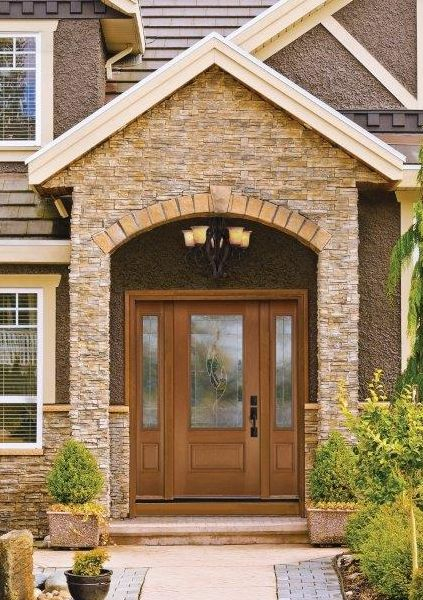How to prepare the roof for the Chicago winter?
Preparing your roof for the harsh Chicago winter is essential to protect your home and prevent potential damage. Here are some steps you can take to prepare your roof for winter:
Inspect the Roof:
Start by visually inspecting your roof for any signs of damage or wear. Look for missing or damaged shingles, loose flashing, or cracked seals around vents and chimneys. If you notice any issues, consider repairing them before winter arrives.
Clean Gutters and Downspouts:
Clear your gutters and downspouts of leaves, debris, and any other obstructions. Clogged gutters can lead to ice dams, which can cause water to back up under your shingles and damage your roof.
Trim Overhanging Branches:
Trim any overhanging tree branches that could potentially fall onto your roof during heavy snow or ice storms. Falling branches can cause significant damage to your roof.
Check for Leaks:
Inspect your attic or the interior of your home for any signs of leaks. Water stains on the ceiling or walls, damp insulation, or mold growth can indicate a leak in your roof. Address any leaks promptly to prevent further damage.
Seal Gaps and Cracks:
Seal any gaps or cracks around vents, pipes, and chimneys with appropriate roofing sealant or caulk. This will help prevent drafts and water infiltration.
Insulate Your Attic:
Adequate attic insulation can help prevent heat loss, which can contribute to ice dam formation. Make sure your attic is properly insulated and ventilated to maintain a consistent temperature on your roof.
Check Flashing:
Examine the flashing around chimneys, skylights, and roof vents. Ensure that it is secure and in good condition. Replace any damaged or missing flashing to prevent water penetration.
Snow Removal:
After heavy snowfalls, consider removing excess snow from your roof, especially if you have a flat or low-pitched roof. Use a roof rake with an extension pole to safely clear snow, but be cautious not to damage your shingles in the process.
Inspect Attic Ventilation:
Proper attic ventilation is crucial to prevent moisture buildup, which can lead to roof damage and ice dams. Make sure your attic has adequate ventilation, including soffit and ridge vents.
Hire a Professional:
If you're not comfortable with any of the above tasks or if your roof needs extensive repairs, it's advisable to hire a professional roofing contractor. They can perform a thorough inspection and make necessary repairs or upgrades.
Remember that winter weather in Chicago can be severe, so it's essential to take these steps before the winter season begins to ensure your roof is ready to withstand the challenges it may face. Regular maintenance and proactive measures can help extend the life of your roof and protect your home from winter-related damage.
A flat roof is a type of roofing design characterized by its minimal slope or pitch. Unlike sloped roofs, which have a noticeable angle or incline, flat roofs have a very slight slope or may even appear entirely flat when viewed from a distance. While they are not perfectly flat and usually have a small slope for water drainage, this slope is generally much less pronounced than that of sloped roofs.
Flat roofs are commonly used in both residential and commercial buildings, as well as in industrial and institutional structures. They offer certain advantages, such as cost-effectiveness, ease of installation, and the potential for additional outdoor space like rooftop gardens or terraces. However, there are also some challenges associated with flat roofs, including potential water pooling and drainage issues, which can lead to leaks if not properly designed and maintained.
To ensure proper drainage and prevent water from accumulating on a flat roof, it typically features a waterproofing membrane, insulation, and a roof deck. Proper maintenance and regular inspections are essential for the long-term performance of flat roofs to address potential issues promptly. Different types of roofing materials, such as built-up roofing (BUR), modified bitumen, single-ply membranes (e.g., EPDM, TPO, PVC), and even green or living roofs, can be used on flat roofs, depending on the building's needs and climate conditions.
Preparing your home's siding for Chicago winters is important to ensure that it can withstand the harsh weather conditions, including cold temperatures, snow, and ice. Here are some steps you can take to prepare your siding for the winter:
-
Inspect Your Siding: Before winter arrives, inspect your siding for any damage, such as cracks, chips, or loose panels. Address any issues you find, as winter weather can exacerbate existing problems.
-
Clean Your Siding: Use a power washer or a hose with a siding cleaning solution to remove dirt, mildew, and mold. Clean siding helps maintain its integrity and appearance.
-
Trim Trees and Shrubs: Trim any trees or shrubs near your home that may come into contact with your siding during heavy snow or ice accumulation. This can help prevent damage from falling branches.
-
Seal Gaps and Cracks: Inspect your siding for any gaps or cracks where cold air and moisture can enter. Use caulk or weatherstripping to seal these gaps, helping to improve energy efficiency and prevent drafts.
-
Inspect and Repair Paint or Stain: If your siding is painted or stained, check for any areas where the finish is peeling or damaged. Repaint or restain as needed to protect the siding from moisture.
-
Consider Insulation: If you have older siding or live in a particularly cold part of Chicago, consider adding insulation beneath your siding. This can help improve energy efficiency and keep your home warmer in the winter.
-
Clear Debris: Make sure that there's no debris, leaves, or other materials trapped between the siding and your home. These can trap moisture and cause damage over the winter.
-
Protect Against Ice Dams: Ice dams can form on your roof and potentially damage your siding as melting snow refreezes. Make sure your attic is well-insulated and ventilated to prevent ice dams.
-
Snow Removal: After a heavy snowfall, it's important to clear snow away from your siding to prevent moisture from seeping in. Use a roof rake or snow blower to safely remove snow.
-
Consider Storm Windows or Shutters: Storm windows and shutters can add an extra layer of protection to your siding, reducing heat loss and providing additional insulation.
-
Keep Gutters Clean: Properly functioning gutters and downspouts can help direct water away from your siding. Make sure they are clean and in good working order.
-
Regular Maintenance: Perform regular maintenance on your siding throughout the winter, checking for any issues and addressing them promptly.
-
Professional Inspection: If you're unsure about the condition of your siding or need assistance with any repairs or improvements, consider hiring a professional siding contractor to inspect and prepare your siding for winter.
By taking these steps to prepare your siding for Chicago winters, you can help protect your home and maintain its appearance and integrity throughout the cold season.




